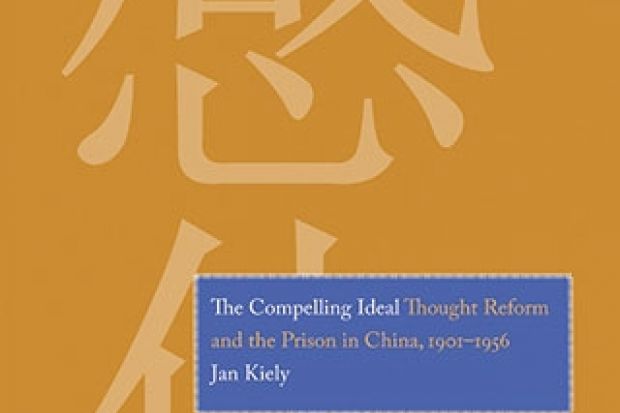Jan Kiely, an American sinologist based at the Chinese University of Hong Kong, shows with admirable clarity that the notion of thought reform, or ganhua, occupied the minds and goals of late Qing dynasty reformers, Japanese penologists, progressive prison wardens during the Republic, Chiang Kai-shek and his son Ching-kuo, Buddhists and of course Mao Zedong even before he came to national power. All of these people managed to hold in their own minds the ideal of reforming the minds of prisoners. But in real-world prisons, violence, torture and death were widespread, and in the Communist era they became the rule.
One of the most fascinating characters in this book, and a figure new to me, is the Japanese envoy and penologist Ogawa Shigejirō (1863-1925). During a time when late Qing reformers admired Western and Japanese reforms – and the strength that enabled them to humble the Qing state – Ogawa argued that prison reform was “related to the rise and fall of national civilization”. As an invited government adviser and professor at Beijing’s Imperial Capital Law School in 1908-10, he wrote a draft prison code, designed the model Beijing No. 1 Prison, and taught the ideal of ganhua to hundreds of young Chinese. But within less than half a century, as Kiely shows, at Mao’s pre-1949 Yan’an headquarters such progressive notions were sidelined by the insistence on total Communist dominance.
Throughout the 1910s and 1920s, progressive wardens and guards in Chinese prisons aimed at two targets: the alteration for the better of prisoners’ minds, and strengthening the power of the state. China’s greatest pre-Communist writer Lu Xun claimed that this approach was merely a way “to show off to foreigners”. Kiely contends, however, that Lu ignored the “impressively energetic quest” of many officials “to regain national dignity and full sovereignty through a combination of domestic reforms and international negotiations”. Perhaps, but on the next page he observes that imposing new prisons, often hellholes of filth and bad food, were in fact “a fearsome monumental presence in the major Chinese cities” of the day. Indeed, throughout the 1920s and 1930s, says Kiely, many Chinese prisoners – I would guess most of them – experienced what would become the norm for most of the 20th century: “summary detentions, arbitrary fines, instances of torture, and executions were carried out…outside the purview of the centrally supervised judicial system”.
Kiely is right to underline that from the middle of the 19th century China was racked with civil and foreign wars; it is therefore a marvel that some prison officials and some national leaders managed to keep humane ideals alive. He does well to cite the contention of Frank Dikötter that Chinese prisons – like most others around the world – depended ultimately on “manacles, leg irons, truncheons, and firearms”. Kiely adds that the new prisons were “arranged to control and discipline inmates through techniques of separation, surveillance, and regulated routine”. He states, too, that Chinese prisoners, in all periods and under all governments, soon understood that exhibiting repentance and cooperation could lead to better treatment and the possibility of release.
In The Compelling Ideal’s excellent chapters on the Communist system of thought reform, Kiely writes that although Communist leaders in the pre-1949 years “presented their rehabilitative penal system as uniquely progressive and humanitarian”, it was in fact underpinned by “mass violence” and marked by “the extreme methods of the Yan’an Salvation Movement”, or Rectification Movement, that began in 1942 at the Communist revolutionaries’ base in the country’s remote northwestern region. Between 1951 and 1952, with the party now in full control of China, more than 700,000 “counter-revolutionaries” were executed.
Although it is not mentioned in Kiely’s otherwise comprehensive work, the best account of what happened in Yan’an, including the way prisoners learned to feign cooperation, is David Apter and Tony Saich’s admirable 1998 study Revolutionary Discourse in Mao’s Republic. Apter and Saich offer a telling comment by Kang Sheng, Mao’s hatchet-man at Yan’an, who warned that for “those people who do not wish to confess, we have maintained a lenient policy, but leniency has a limit”.
The Compelling Ideal: Thought Reform and the Prison in China 1901–1956
By Jan Kiely
Yale University Press, 416pp, £40.00
ISBN 9780300185942
Published 21 August 2014
Register to continue
Why register?
- Registration is free and only takes a moment
- Once registered, you can read 3 articles a month
- Sign up for our newsletter
Subscribe
Or subscribe for unlimited access to:
- Unlimited access to news, views, insights & reviews
- Digital editions
- Digital access to THE’s university and college rankings analysis
Already registered or a current subscriber?





